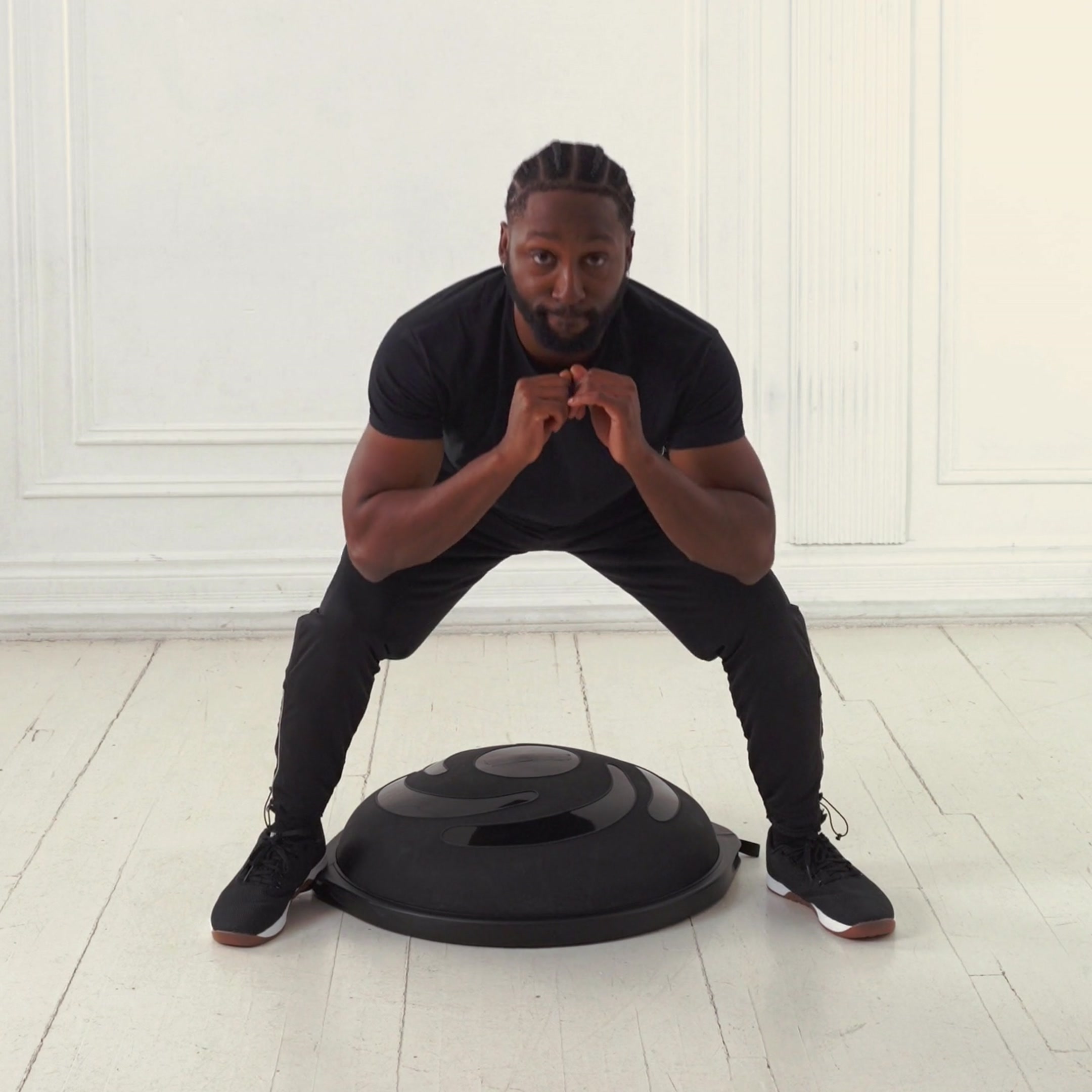Y Squat
Bodyweight squat with arms extended overhead in a Y shape that targets quads, glutes, shoulders, and core to build lower body strength, upper body stability, and mobility.
About Exercise
Equipment
Difficulty
3/5 • Beginner
Primary Muscle Groups
Quads, Glutes
Secondary Muscles
Shoulders, Lower Back, Traps, Calves
Popularity Score
5
Goals
Training Style
Setup Requirements
Requires Rack
No
Requires Bench
No
Requires Spotter
No
Space Needed
Small
Noise Level
Low
Muscle Breakdown
View Muscle MapQuads
9/10Rectus Femoris, Vastus Lateralis, Vastus Medialis
Glutes
8/10Glute Max
Hamstrings
6/10Biceps Femoris
Abs
6/10Rectus Abdominis
Shoulders
5/10Anterior Delts
Lower Back
4/10Erector Spinae
Traps
4/10Upper Traps
Calves
3/10Gastrocnemius
Programming
Typical Rep Range
10-20 reps
Rest Between Sets
30-60 seconds
How to Perform
Stand with feet shoulder-width apart, toes slightly out. Extend arms overhead in a Y shape with palms facing in and elbows straight.
- Push hips back to initiate squat.
- Lower until thighs are parallel to ground, knees over toes.
- Keep chest up and arms extended overhead.
- Drive through heels to stand, squeezing glutes.
- Maintain core engagement throughout.
Coaching Tips
Form Cues
- Core tight
- Arms in Y shape
- Heels down
- Knees track toes
- Chest up
Breathing
Inhale as you lower into the squat; exhale as you drive up to stand. Brace core before descending.
Tempo
3-1-2
Range of Motion
Lower until thighs parallel to floor or as low as form allows without back rounding; arms stay fully extended overhead.
Safety
Safety Notes
- Avoid if acute shoulder impingement or lower back pain exists
- Do not force depth if mobility limits form
- Engage core to protect spine
Spotting
Spotting not required for bodyweight exercise; use self-awareness for form.
Common Mistakes
- Rounding lower back
- Lifting heels
- Allowing arms to drop
- Knees caving inward
When to Avoid
- Shoulder impingement
- Lower back injury
- Poor ankle mobility
Flexibility Needed
- Shoulder flexion to 180 degrees
- Ankle dorsiflexion for squat depth
Build Up First
- Master basic bodyweight squat
- Core stability competency
Also known as
Overhead Y Squat, Y Raise Squat
Found this helpful?
Share your thoughts or help us improve this guide.
Similar Exercises

Pistol Squats
Bodyweight
Quads

TRX Squat
TRX
Quads

Balance Trainer Jump Squats
Balance Trainer
Quads
Sissy Squat
Bodyweight
Quads

Balance Trainer Knee Up Squats
Balance Trainer
Quads

Cossack Squat
Bodyweight
Quads

Squat to Stand
Bodyweight
Glutes, Hamstrings

Machine V Squat
V-Squat Machine, Plates
Quads

Squat Side Kick
Bodyweight
Quads

Squat Tuck Jump
Bodyweight
Quads


subscribe to our newsletter
Contact Us
hello@trainfitness.aiFind Us
130 Spadina Avenue, Toronto,
Ontario, M5V 0H4, Canada
©2025 All Rights Reserved
